Human remains, which were stolen from Inishbofin over 130 years ago, are to be returned to a delegation of island residents today.
The skulls of 13 people were taken from the grounds of St Colman's Monastery, in 1890.
They were brought to Trinity College in Dublin soon afterwards and have remained there ever since.
The return journey to the island off the Galway coast will bring to an end a long running campaign to ensure the remains were brought back to their original resting place.
The skulls from Inishbofin, form part of a collection gathered by anthropologist Alfred Haddon and his colleague Andrew Dixon, in the late 19th Century.
In a diary entry, Haddon recorded how he went there under cover of darkness on 16 July 1890, along with Dixon, and stole 13 skulls.
They placed them in a sack and brought them to the pier, from where they sailed back to Galway the next day.
Soon afterwards the skulls were brought to Dublin, where they have been stored for over 130 years.
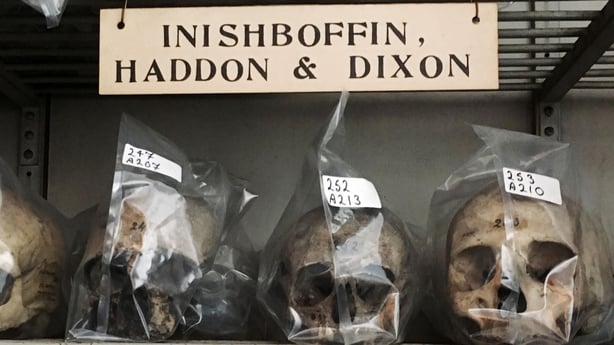
Visual arts curator Dr Ciarán Walsh has spent over a decade researching the theft.
He stumbled upon the story in 2012, when he was researching a project and saw some photographs taken on Inishbofin in the 1890s, in which the skulls of local people were being measured.
This was an anthropological practice at the time, as part of an effort to trace the origins of humankind.
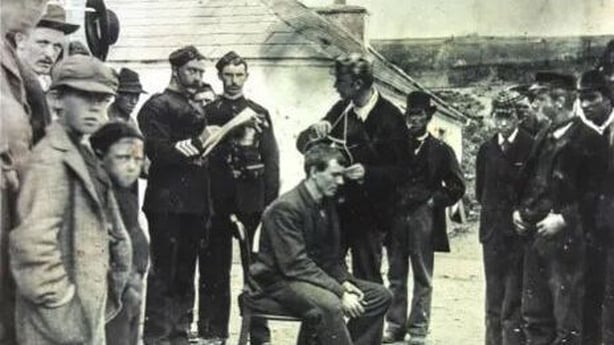
In turn, that led to further research about the theft of the skulls, and the eventual revelation that they were in Trinity College Dublin.
But efforts to secure their return to the west coast were protracted. It was only this year that authorities in TCD acceded to the request and cleared the way for today’s handover.
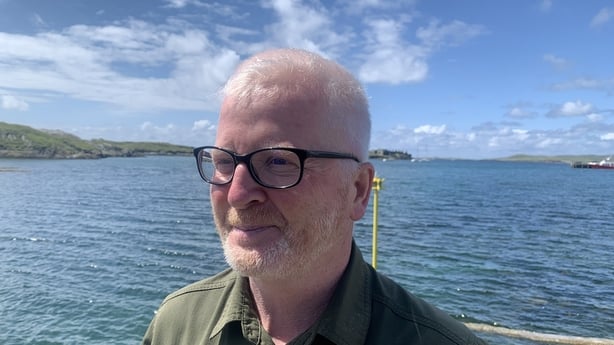
'Correction of an historic wrong'
Dr Walsh says the momentum generated by the Black Lives Matter campaign fed into the discussions, as it placed a spotlight in the historical role played by colonial era institutions and practices.
He describes the handover as the "correction of an historic wrong" and says the enormity of the event cannot be overstated.
"This is the first event of its kind in Ireland and as far as the return of stolen human remains goes, it's of international significance," Dr Walsh says.
After they are handed over the islanders, the 13 skulls will be placed in a coffin designed by Christopher Day, to resemble traditional Inishbofin coffins of the past.
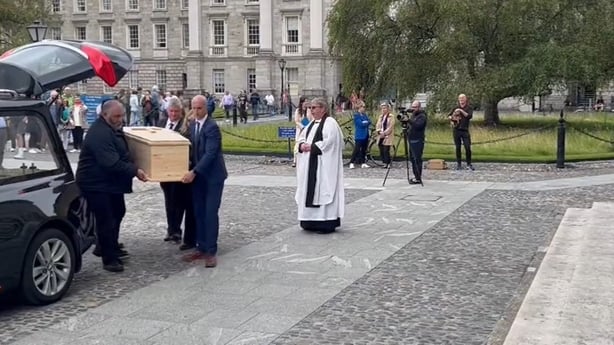
The coffin will be transported from Dublin to Galway this evening and will be brought back to the island on Saturday afternoon.
The remains will be brought to the church and repose there overnight, before a funeral mass is celebrated at 1pm on Sunday.
After that, the coffin will be carried to the graveyard, which is adjacent to the old monastery.
There, the skulls will be buried in the shadow of the church ruin from where they were stolen, 133 years to the day later.

'Thank God this is over'
Inishbofin resident Marie Coyne has led the campaign to have the remains returned.
She says today is laden with emotion for generations of people with links to the island.
Standing beside the grave that has been dug by locals in advance of Sunday’s reinterment, Ms Coyne says the significance of the occasion will resonate far and wide.
"It'll be like breathing out at last," she says.
"You'll feel 'thank God this is over’, 'cause it's been a long time and it's caused a lot of emotion and a lot of people have worked on it.
"I don't actually know how I'll be, but I think I'll be very relieved."
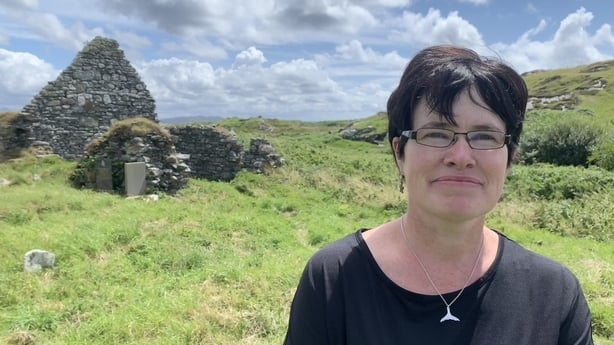
And that relief will also be matched with a sense of pride in their place and the journey locals have undertaken for their predecessors.
"These are our people and we want them here with us," Ms Coyne said.
"I've gone to over 120 funerals in this graveyard, and I did a book on the graveyard a few years ago where we marked the plots and we wrote down what was on the headstone.
"And I've been in here for maybe for almost two years, coming and going, working on the book.
"So I spent a lot of time in here, and when my dad died, I spent every day coming here.
"And I think that when they come home, it'll be one funeral.
"I'll be actually glad to go to because it's a homecoming for them. And to me it's a celebration, too, for them to be coming home."
She told RTÉ's News at One that it was about bringing the remains home as they were stolen.
"t’s wrong. It's not right. You feel something and you have to give it back. It’s only right that they go back," she said.
"We have been at this a long time... it’s a special day. Even though it’s a sad occasion, I feel joy and I feel happy, it’s a funeral I will be glad to go to."
Trinity College says a Colonial Legacies Working Group would consider requests for other skulls in the Haddon and Dixon Collection, which were taken from Oileán Árann and from St Finian's Bay in South Kerry, to be returned.
At this time, no decisions have been taken in this regard.
Detailed analysis, such as DNA testing of the remains is complicated by ethical considerations.
One of the oldest Inishbofin skulls dates from 1550, with the rest from people who died between then and the mid-17th century.
But linking them to their possible descendants has not been possible.
"The ethics of a situation like this is that you get the remains home and you bury them," said Dr Walsh.
"You don't interfere with them, you don't extract anything from them. You don't measure them.
"So ethically, the right thing to do [is] get them home, give them a funeral, in the tradition of the island."





